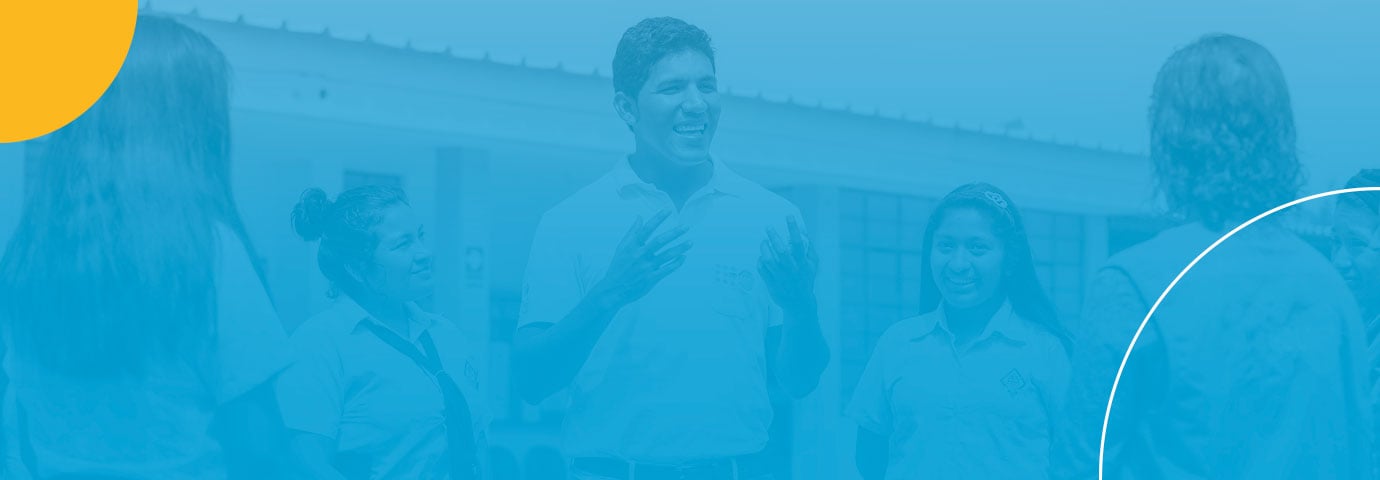
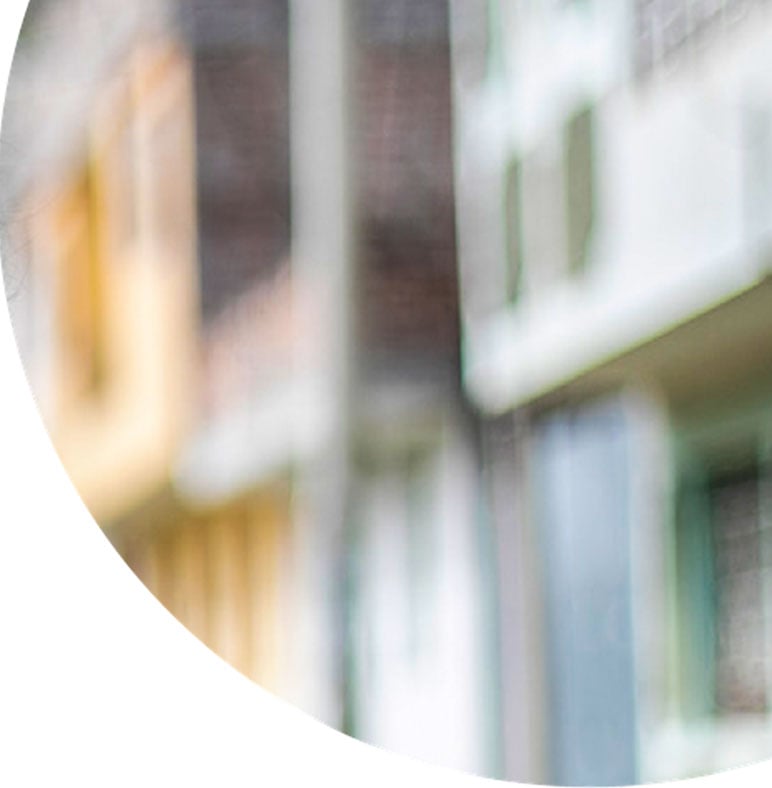

UNFPA in the face of the pandemic
The coronavirus arrived to our territory, affecting citizens in many ways. Because of this, the United Nations Population Fund (UNFPA) in Peru developed a series of actions to mitigate its impact, especially the one that affects the most vulnerable. From early April until the end of June, the agency carried out six campaigns focused on protecting rights and guaranteeing access to opportunities for the most vulnerable populations.
"In Peru, the COVID-19 pandemic affected access to sexual and reproductive health services and clinical care for sexual violence. This situation has had negative consequences on the health of women, adolescents and girls, such as unintended pregnancies, maternal deaths, and high-risk pregnancies not treated in a timely manner."
Hugo González
UNFPA Representative in Peru

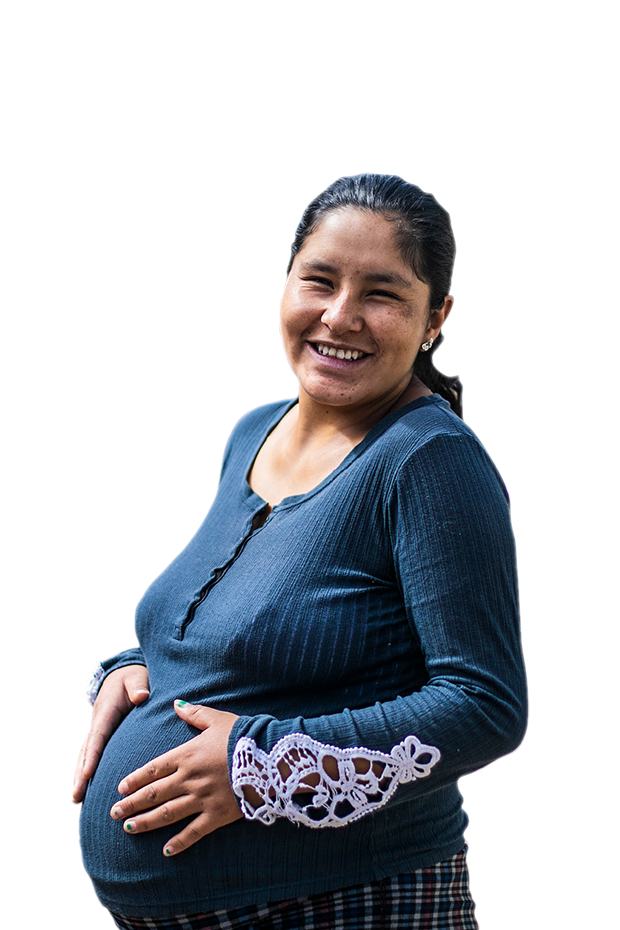


An urgent response to the emergency
The COVID-19 pandemic and the measures taken by the countries to contain its spread have modified—at least temporarily—the rules of social relations, dramatically affecting the health,life, economy and livelihoods of all people in the world. Since the first quarter of 2020, in most countries, people have seen their way of life change abruptly.
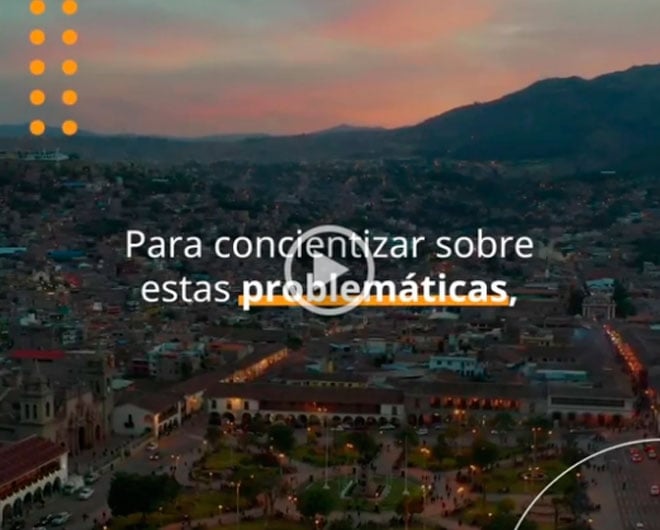
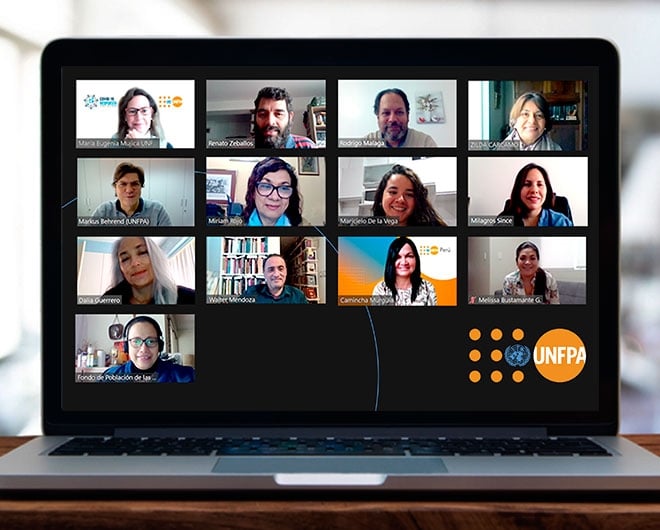
The United Nations (UN) and the United Nations Population Fund (UNFPA) also had to adjust their 2020 work plans to provide an effective response to COVID-19 and its great and multiple challenges. They focused on the following three pillars: the health response, the socio-economic response and the humanitarian response.
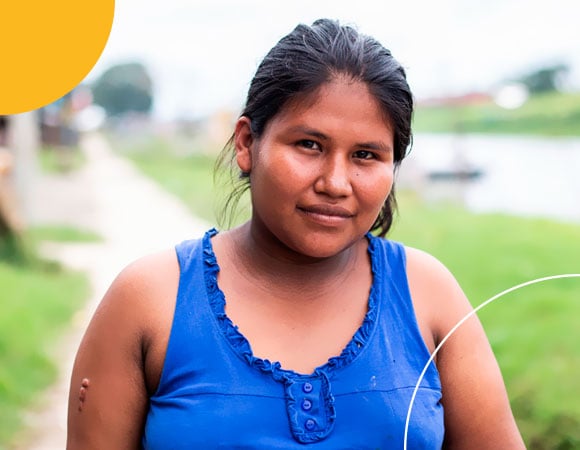
"In addition to the various awareness campaigns carried out, technical assistance was provided for the approval of sectoral regulations aimed at protecting sexual rights and reproductive health and the right to a life free of violence in the context of COVID-19", details Melissa Bustamante, Head of the Gender and Human Rights area at UNFPA in Peru.
In "emergency mode"
Within the framework of its 2017-2021 Country Program in Peru, UNFPA—the UN Organization that ensures universal access to sexual and reproductive health services, the full exercise of sexual and reproductive rights, gender equality and the development of adolescents and young people to their full potential—adapted its 2020 Work Plan to address new needs, which often are not so new. And it will continue to do so in this context of transition.
It has also been marked by an intense and permanent coordination within the UNFPA Country Office, in which all people quickly went into emergency mode to respond in an emergency context.
"The task carried out involved the reformulation of the original work plan, but also an adaptation of our work to the new reality, such as the use of online platforms that promote operability", details Milagros Since, UNFPA Program Assistant in UNFPA - Peru.
"We have sought to ensure that there are no setbacks in the realization of sexual rights andreproductive processes, with emphasis on those most vulnerable.We have made sure that access to sexual and reproductive health is not interrupted, which includes, among others,maternal health and family planning, the latter with an emphasis on the delivery of modern contraceptives. Similarly, we are committed to continuing to prevent and respond to gender-based violence. We also advocate for sexual and reproductive health personnel to be considered first-line personnel and to be endowed with the necessary personal protection elements," comments María Eugenia Mujica, UNFPA Assistant Representative in Peru.
Along these lines, UNFPA has worked hand in hand with its national counterparts in responding to COVID-19 in their areas of responsibility. One of the results of the dialogue with the government sectors involved has been the design and implementation of six communication campaigns. They disseminated communication pieces in different formats and channels with great impact on the so-called "last mile"; that is, the most vulnerable populations that should not be left behind.
All the developed interventions were conceived from an intense coordination with different sectors of the State, despite the limitations of social isolation. The first two campaigns were broadcast in early April, just over two weeks after a state of emergency was declared. These campaigns were part of a joint effort that included the preparation of technical documents and information booklets aimed at strengthening the competences of key actors in the management of cases of violence from a multisectoral approach.
"In addition to the various awareness campaigns carried out, technical assistance was provided for the approval of sectoral regulations aimed at protecting sexual rights and reproductive health and the right to a life free of violence in the context of COVID-19", details Melissa Bustamante, Head of the Gender and Human Rights area at UNFPA in Peru.
In "emergency mode"
Within the framework of its 2017-2021 Country Program in Peru, UNFPA—the UN Organization that ensures universal access to sexual and reproductive health services, the full exercise of sexual and reproductive rights, gender equality and the development of adolescents and young people to their full potential—adapted its 2020 Work Plan to address new needs, which often are not so new. And it will continue to do so in this context of transition.
It has also been marked by an intense and permanent coordination within the UNFPA Country Office, in which all people quickly went into emergency mode to respond in an emergency context.
"The task carried out involved the reformulation of the original work plan, but also an adaptation of our work to the new reality, such as the use of online platforms that promote operability", details Milagros Since, UNFPA Program Assistant in UNFPA - Peru.
"We have sought to ensure that there are no setbacks in the realization of sexual rights andreproductive processes, with emphasis on those most vulnerable.We have made sure that access to sexual and reproductive health is not interrupted, which includes, among others,maternal health and family planning, the latter with an emphasis on the delivery of modern contraceptives. Similarly, we are committed to continuing to prevent and respond to gender-based violence. We also advocate for sexual and reproductive health personnel to be considered first-line personnel and to be endowed with the necessary personal protection elements," comments María Eugenia Mujica, UNFPA Assistant Representative in Peru.
Along these lines, UNFPA has worked hand in hand with its national counterparts in responding to COVID-19 in their areas of responsibility. One of the results of the dialogue with the government sectors involved has been the design and implementation of six communication campaigns. They disseminated communication pieces in different formats and channels with great impact on the so-called "last mile"; that is, the most vulnerable populations that should not be left behind.
All the developed interventions were conceived from an intense coordination with different sectors of the State, despite the limitations of social isolation. The first two campaigns were broadcast in early April, just over two weeks after a state of emergency was declared. These campaigns were part of a joint effort that included the preparation of technical documents and information booklets aimed at strengthening the competences of key actors in the management of cases of violence from a multisectoral approach.
"In addition to the various awareness campaigns carried out, technical assistance was provided for the approval of sectoral regulations aimed at protecting sexual rights and reproductive health and the right to a life free of violence in the context of COVID-19", details Melissa Bustamante, Head of the Gender and Human Rights area at UNFPA in Peru.
An important step
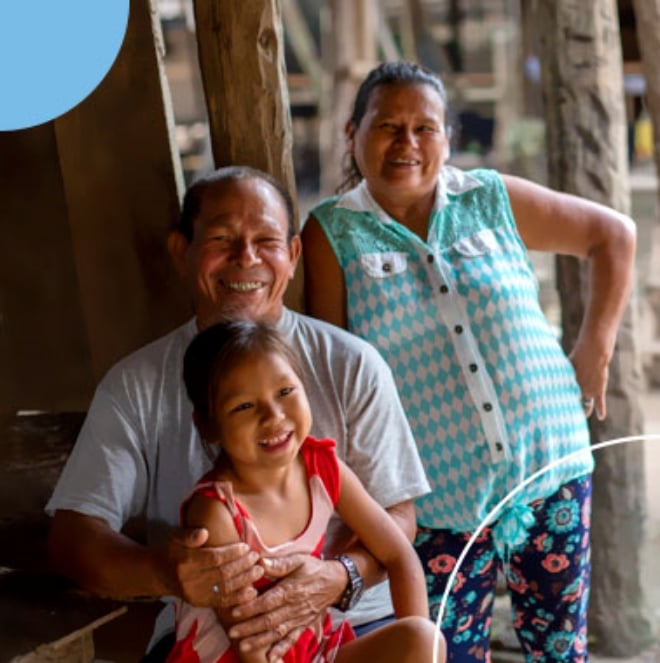




Promoting equality during isolation
The arrival of COVID-19 caused people to stay at home to avoid getting infected and spreading the disease. Social isolation, however, exacerbated gender gaps, deepened violence and inequity in domestic and care tasks. The following data from the first hundred days of the state of emergency are an X-ray of the complex situation of women.
Taking into account the need to ensure that the response to COVID-19 addresses specifically the needs of women, the United Nations Population Fund (UNFPA) in Peru and the Ministry of Women and Vulnerable Populations (MIMP) joined efforts to design two awareness campaigns regarding how to live in isolation with equality, prevent and address gender-based violence and promote sexual and reproductive rights.
These campaigns were complemented by the development of booklets and technical documents to ensure that the response to COVID-19 has a gender focus.
"Any new social measure usually has a differentiated effect on men and women, and this is what has become visible in the pandemic. It is the task of the State to modify certain patterns and solve problems that have been historical in Peru," says Jeannette Llaja, who was the general director of the General Directorate for Equality of the MIMP at the time of the campaign.
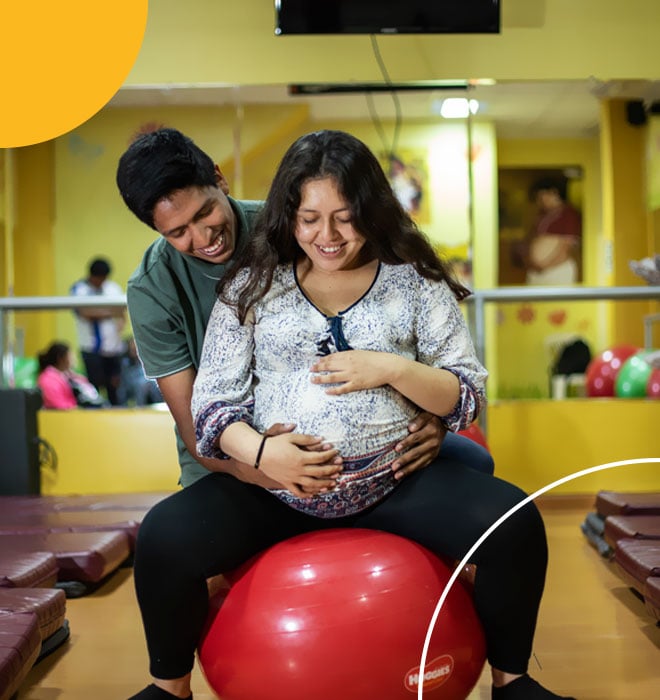
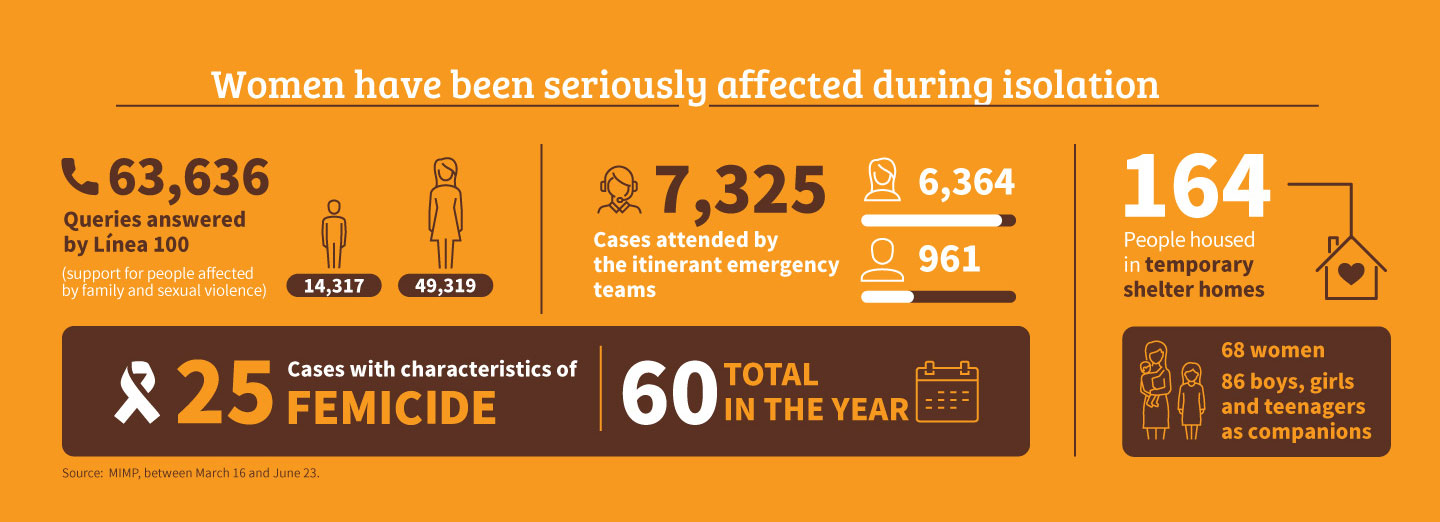
Initiatives for equality
The first campaign, called "Let's live isolation with equality", had as its main objective to promote the active participation of men in household chores and the care of children and the elderly, as well as the prevention and care of gender-based violence.
The second ', "Let's turn emergency situations into opportunities for equality", was aimed at regional and local authorities to adopt measures - in alliance with other public entities — that allow meeting the needs of women, particularly the ones related to the prevention and care of gender-based violence.
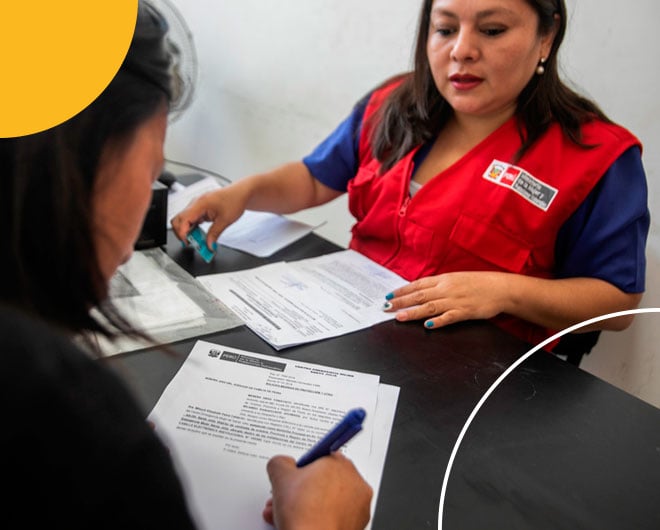

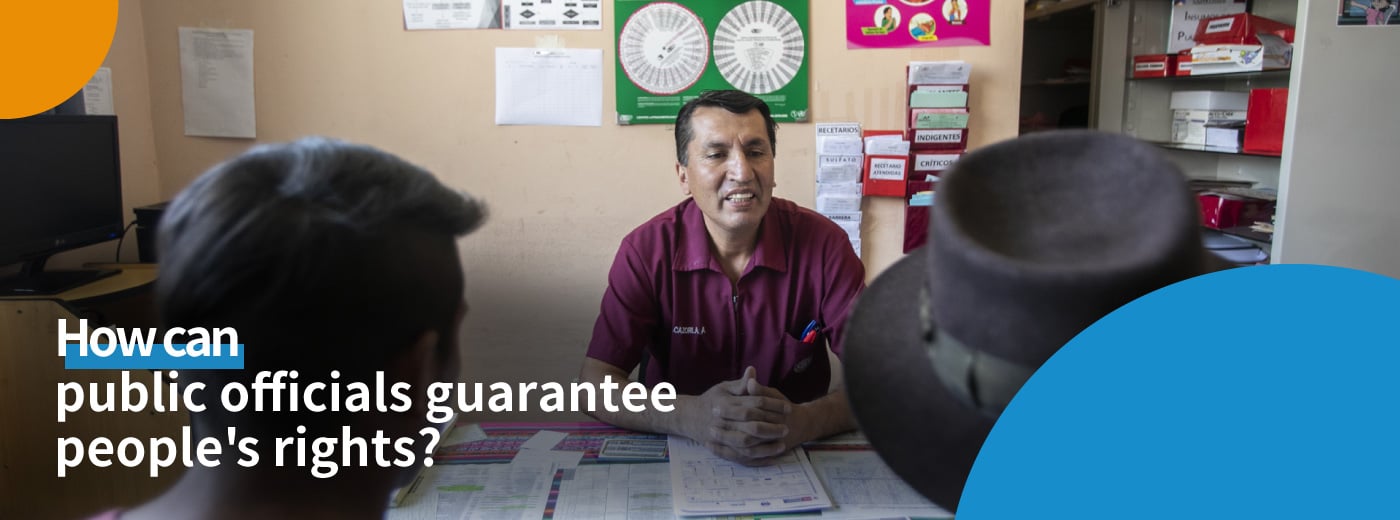
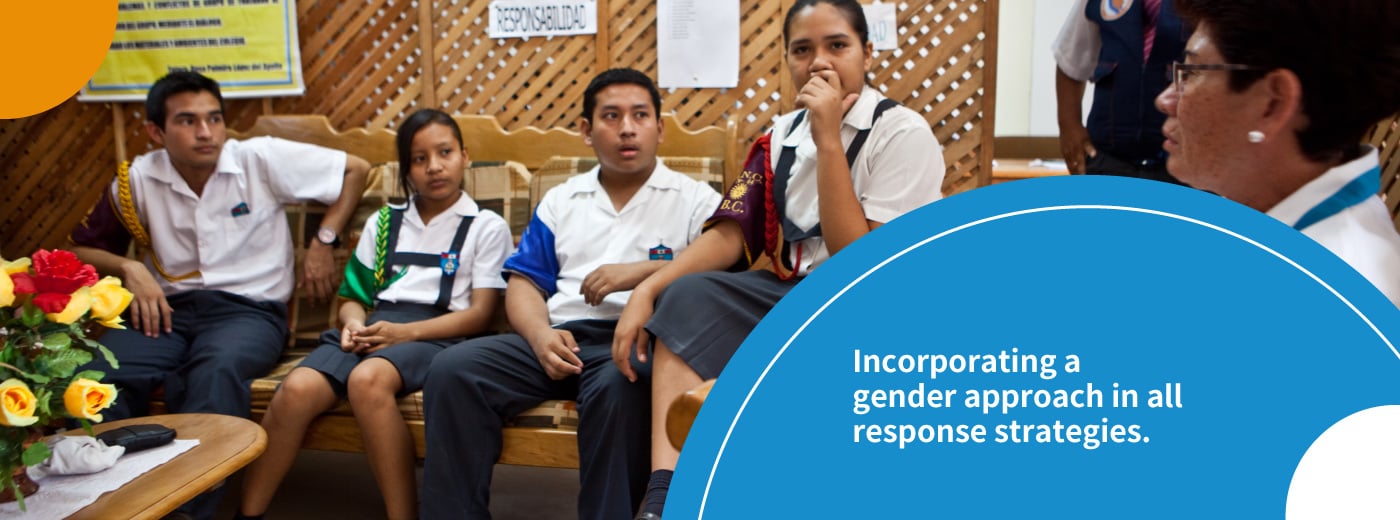
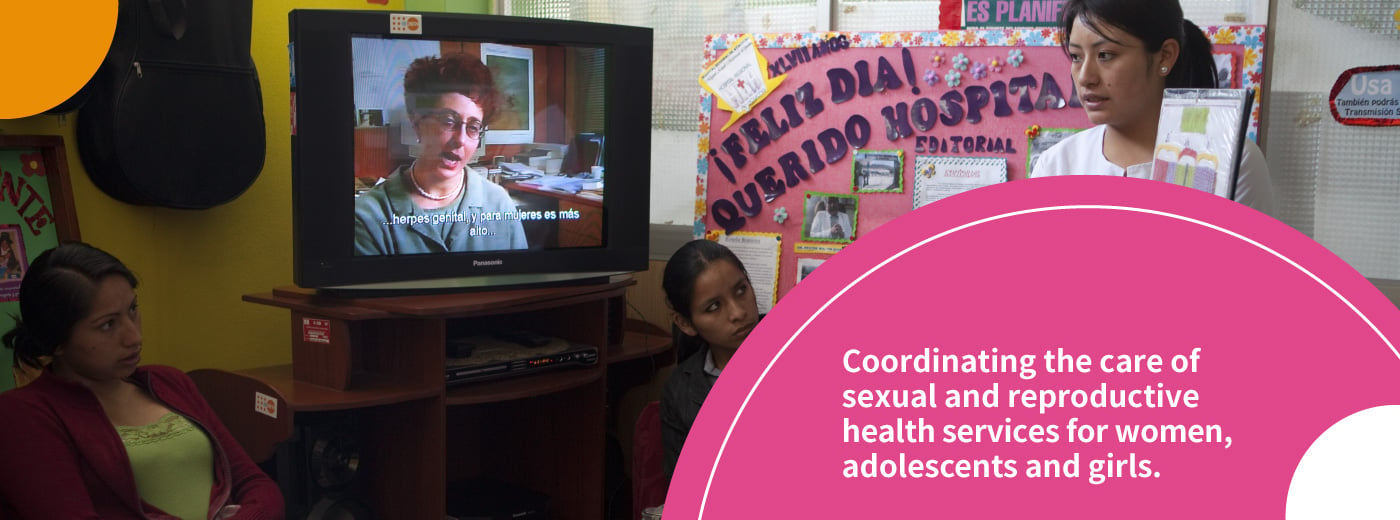
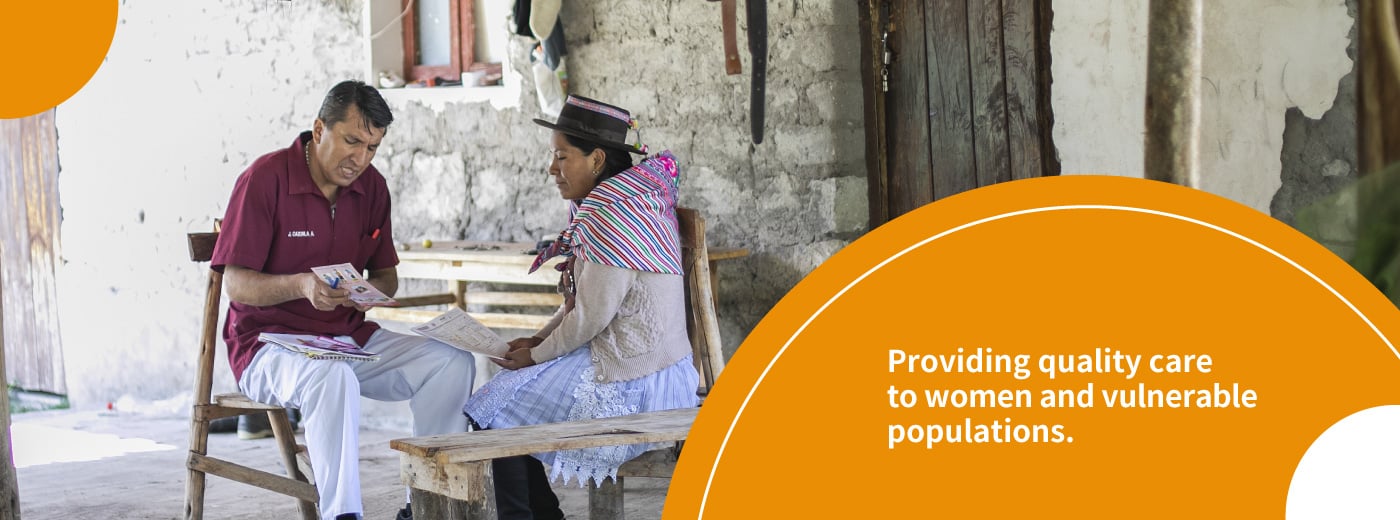

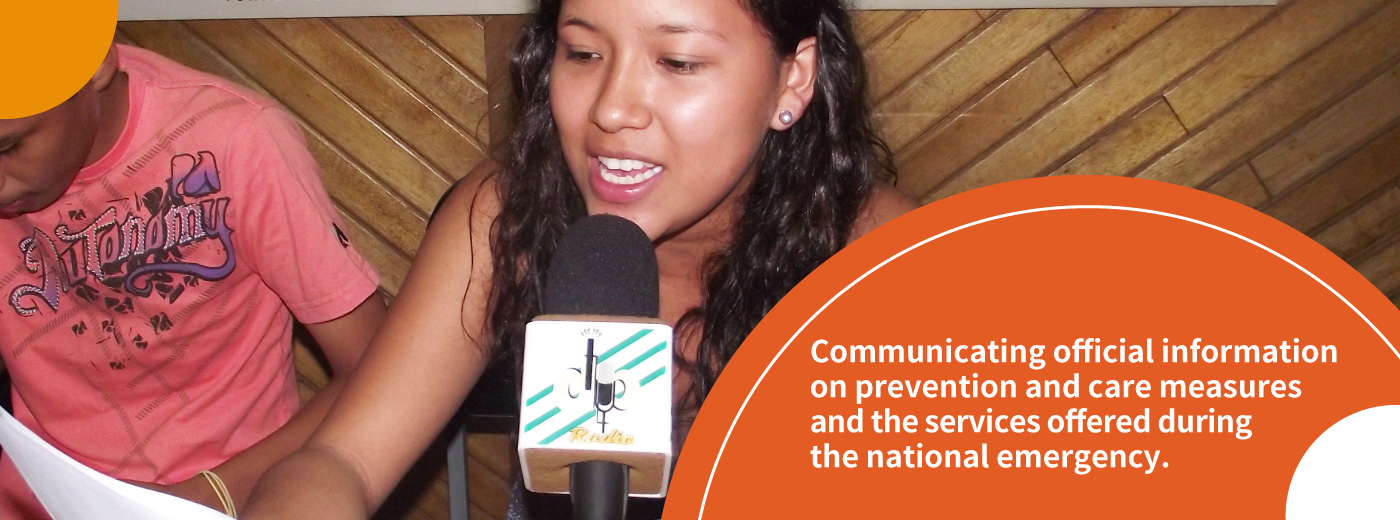








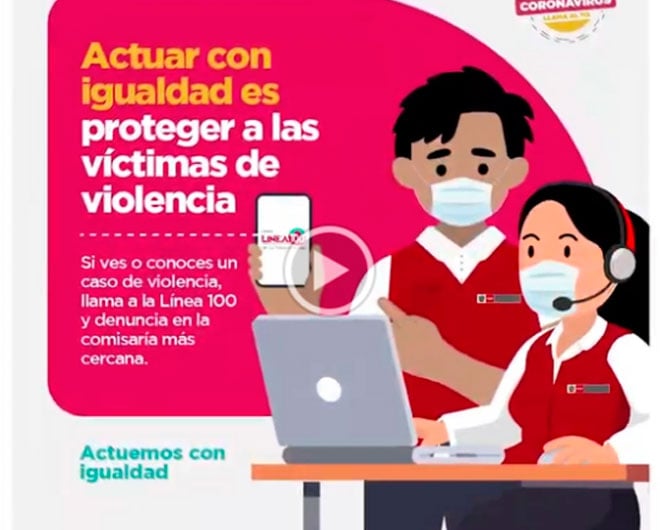
For both cases, various pieces were created for social networks that, given their success, were requested by the UNFPA offices in Panama and Costa Rica, and by the international organization Plan International, in order to be adapted and replicated.
A brochure and an information booklet were also created. The latter, which responds to the second campaign, had a superlative scope, as it was shared with 130 public entities, of which 25 are regional governments.
Other contents considered were spots made and broadcast on radios of the periphery of Lima (Canto Grande, Comas, Sensación and Stereo Villa) and the departments of Ayacucho (Wari) and Piura (Cutivalú and others), sectors that register a high rate of gender-based violence. These radio productions represent a new "communication corridor" of UNFPA in Peru, spaces where the subject being worked on was not reaching its target in the context of social isolation.
Along with many others, Radio Cutivalú, in addition to being a means of transmitting key messages, is a platform that has channeled the demands of the population. Luis Lozada, journalist and director of the station, is a first-hand connoisseur of the reality of Piura, as he has spoken to various women victims of violence over the telephone.
"Our team of communicators is not only meant to transmit news. We are a reference for the community. They believe in us and see us as their allies," he says.
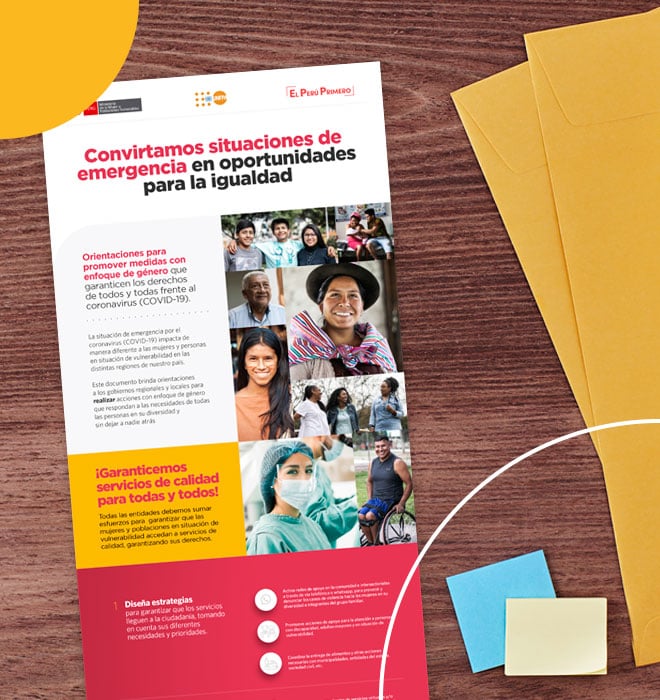
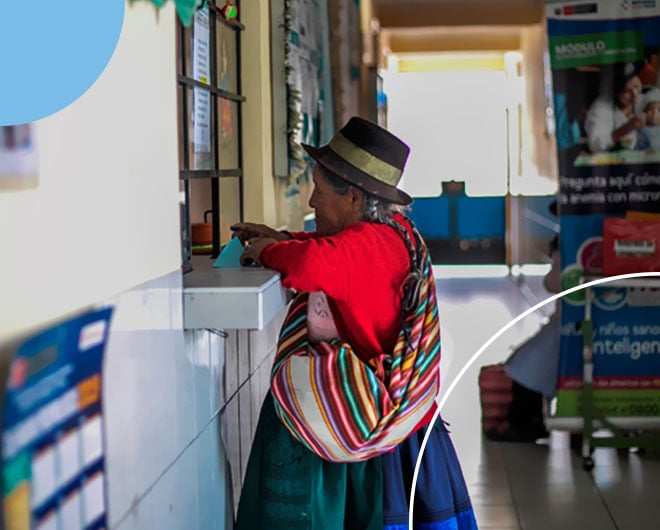
Strategies for more opportunities
What will come next? For María Pía Molero, general director of the General Directorate of Gender Approach Mainstreaming of the MIMP, it is necessary to develop solid strategies to achieve concrete results in the future. "We must design policies and measures with a gender approach to face what comes after the pandemic. Not only do we require new approaches, but also a much more direct intervention in economic, cultural, social and political issues", she notes.




Safe motherhood in times of pandemic
The scenario looked dangerous for future mothers in our country. The numbers made it look like this: until the third week of June 2020, more than 2,320 pregnant women had contracted COVID-19 and nine had died of this disease, according to a report by the National Center for Epidemiology, Prevention and Disease Control of the Health Ministry (MINSA).
To this situation of vulnerability were added the loss of medical personnel throughout the country,the saturation of hospital facilities and the conversion of these facilities into sources of infection, problems that were magnified in the most remote corners of our territory.
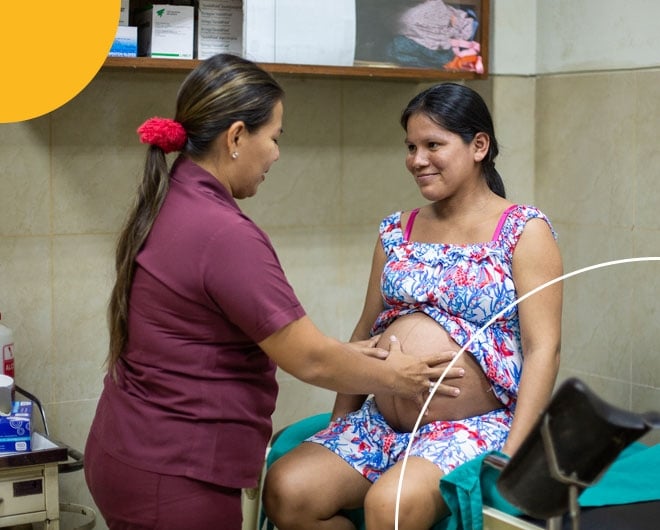
"There is a clear deterioration of care in health facilities, to which is added a reality of disorder,corruption and reduction of public budgets for services to the population," says Oraldo Reátegui, director of Radio La Voz de la Selva,from Iquitos.
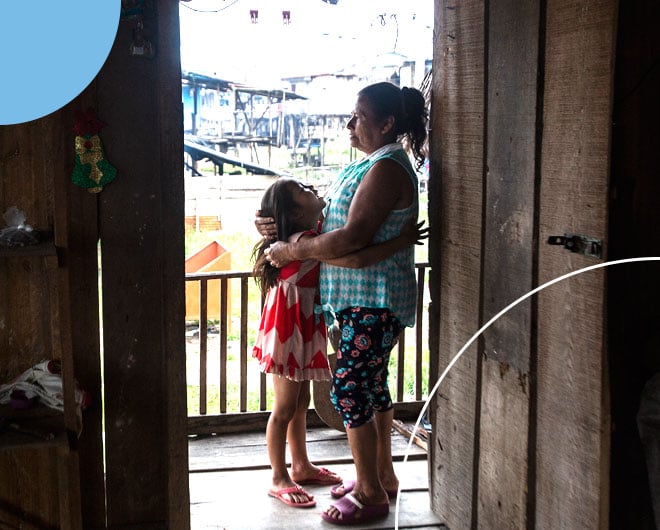
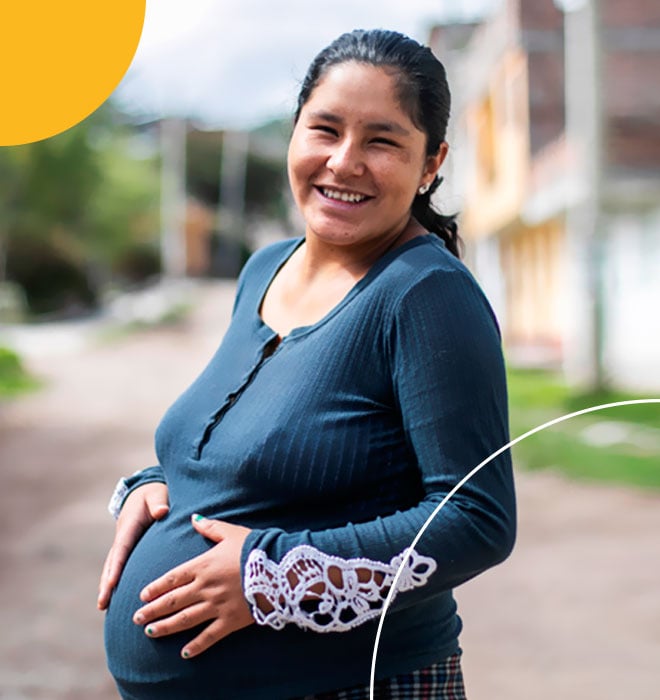
It was in this harsh context that the United Nations Population Fund (UNFPA) in Peru decided to make a first effort to protect pregnant women. Hand in hand with the Pan American Health Organization(PAHO)—the leading agency in times of pandemic— , the campaign was carried out Pregnancy Care , which included a series of graphic pieces to raise awareness about the care that pregnant women should receive during isolation before and after giving birth.
A second stage was the launch of the "Week of healthy, safe and voluntary motherhood" campaign, jointly with MINSA. The purpose was to inform the population about the follow-up health personnel carry out on women during their pregnancy, in addition to promoting preventive measures against the pandemic, recognizing warning signs, promoting healthy eating and family planning counseling that must be accessed after giving birth.
"This work is based on the prioritization we have at the global level of the continuity of sexual and reproductive health services in any context," says Miriam Rojo, head of the Sexual and Reproductive Health area of UNFPA in Peru.
Part of the campaign—the only one carried out with MINSA by a United Nations agency in Peru—took place in the third week of May, the date on which the State annually celebrates its commitment to the protection of pregnant women.
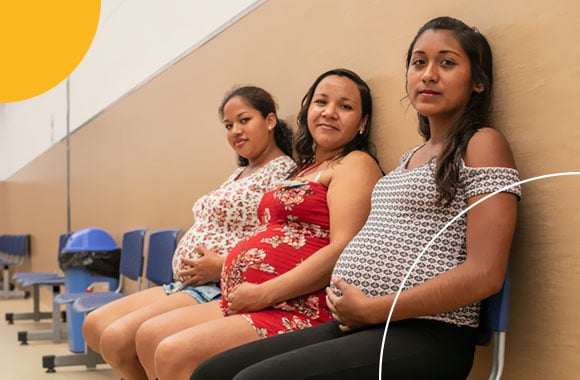
The document preceded the preparation of the Health Directive No. 97-MINSA / 2020 for the prevention and care of pregnant women and newborns at risk or infected with COVID-19, approved with Ministerial Resolution No. 245-2020-MINSA, and the Health Directive No. 098-MINSA / 2020, for the follow-up and monitoring of extreme maternal morbidity, approved with Ministerial Resolution 249-2020-MINSA.
Regulations, communication and deployment
Although the campaign carried out with MINSA focused on the communication aspect, its origin responds to equally important actions on which UNFPA had a decisive participation: Health Directive No. 94-MINSA / 2020, created to guarantee the health of pregnant women and the continuity of care in family planning, and approved with Ministerial Resolution No. 217-2020-MINSA.
"UNFPA gave us technical support with international recommendations for the care of pregnant women in the pandemic. This allowed the regulatory proposal to be articulated", highlights Dr. Guillermo Atencio, executive director of Sexual and Reproductive Health of the Ministry of Health, the sector of the Peruvian State that represents the most visible face in the fight against COVID-19.
The document preceded the preparation of the Health Directive No. 97-MINSA / 2020 for the prevention and care of pregnant women and newborns at risk or infected with COVID-19, approved with Ministerial Resolution No. 245-2020-MINSA, and the Health Directive No. 098-MINSA / 2020, for the follow-up and monitoring of extreme maternal morbidity, approved with Ministerial Resolution 249-2020-MINSA.
Regulations, communication and deployment
Although the campaign carried out with MINSA focused on the communication aspect, its origin responds to equally important actions on which UNFPA had a decisive participation: Health Directive No. 94-MINSA / 2020, created to guarantee the health of pregnant women and the continuity of care in family planning, and approved with Ministerial Resolution No. 217-2020-MINSA.
"UNFPA gave us technical support with international recommendations for the care of pregnant women in the pandemic. This allowed the regulatory proposal to be articulated", highlights Dr. Guillermo Atencio, executive director of Sexual and Reproductive Health of the Ministry of Health, the sector of the Peruvian State that represents the most visible face in the fight against COVID-19.
The document preceded the preparation of the Health Directive No. 97-MINSA / 2020 for the prevention and care of pregnant women and newborns at risk or infected with COVID-19, approved with Ministerial Resolution No. 245-2020-MINSA, and the Health Directive No. 098-MINSA / 2020, for the follow-up and monitoring of extreme maternal morbidity, approved with Ministerial Resolution 249-2020-MINSA.
The communication contents developed in the campaign included various pieces on social networks, videos, flyers and guidelines on the radio in Lima, Lambayeque, Loreto and Ucayali, areas where the coronavirus has hit hard and where there is a lack of health personnel. In addition, the radio spots were translated into the Quechua language to reach the most remote towns. With these actions, many people from these cities were reached and educated.
Other contents displayed were talks via YouTube and a webinar with the participation of Dr. Atencio, Executive Director of the Sexual and Reproductive Directorate of MINSA, and Dr. Vicky Camacho-Hübner, regional technical advisor in Sexual and Reproductive Health of the UNFPA Regional Office for Latin America and the Caribbean.
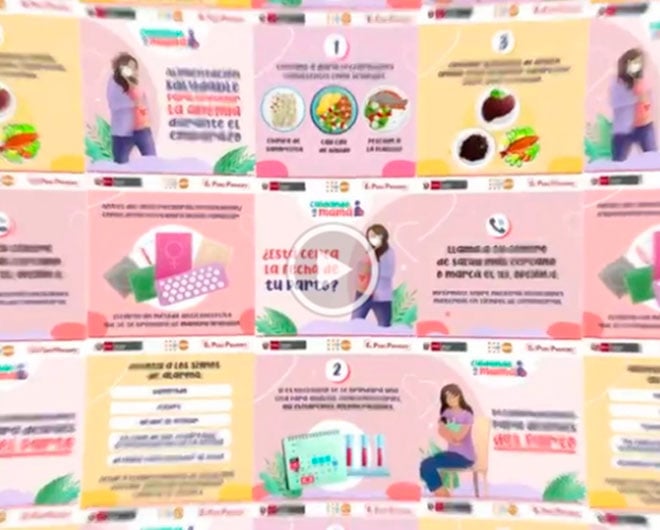
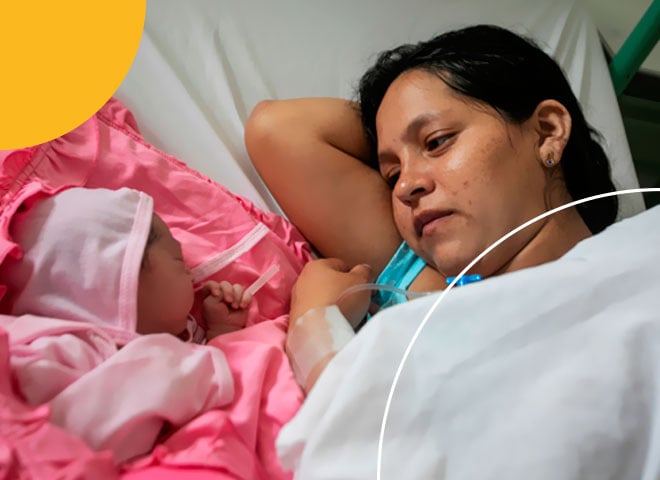
The webinar is a sample of an articulated effort that took place within MINSA and that was led by the Sexual and Reproductive Health Directorate and the Communications and TeleHealth areas. The latter offered its platform to develop the virtual workshop. Both spaces brought together a large number of Internet users. The videos uploaded to YouTube had more than 15 thousand views in a month and a half.
More joint actions
Cooperation between UNFPA and MINSA is still ongoing. The success of the campaign for mothers has sparked the interest of this portfolio to carry out more joint actions in times of pandemic. The ability to articulate efforts and the knowledge of the work of actors in the same sector have been essential elements to carry out major initiatives.


New generations make the difference
Adolescents and young people (people between 12 and 29 years old) together make up one third of the Peruvian population. This is a representative group who faces serious challenges during the health emergency due to COVID-19, but who also shows great leadership in generating transformations and contributing to society.
"Youths make a difference" is a campaign carried out by the United Nations Population Fund (UNFPA) in Peru together with the Ministry of Education (MINEDU) and the National Secretariat for Youth (SENAJU). Its objective is to position the new generations as strategic actors in the task of saving lives during the emergency and contributing to democratic coexistence with equal opportunities for men and women during isolation.
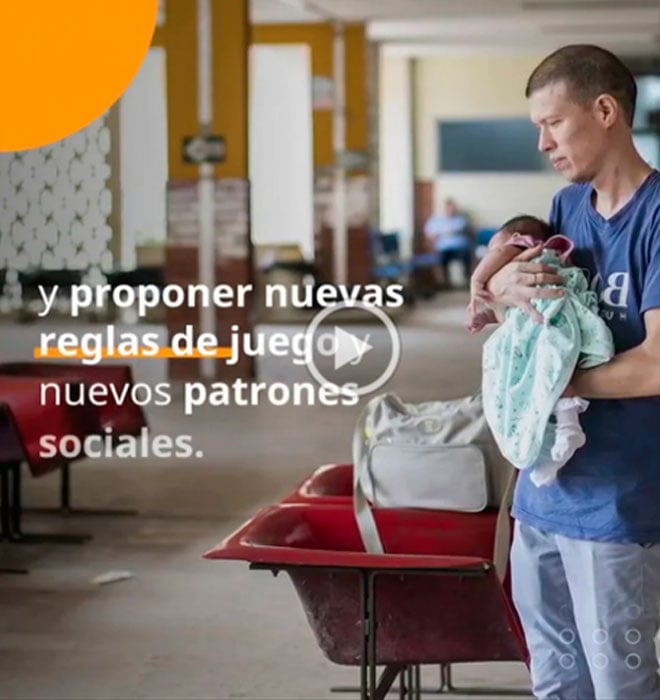
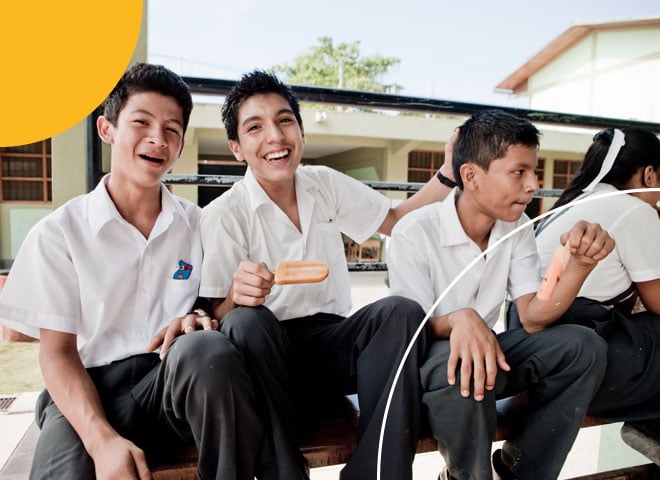
Why precisely are they called to action? "We think they have the power to transform social norms, attitudes and behaviors that contribute to their well-being and that of others," explains Carmen Murguía, Program Analyst in the area of Adolescence and Youth at UNFPA in Peru.
"Young people have been influenced, to a greater extent, by globalization and by positive currents, such as greater respect for gender equality, differences and inclusion," adds José Montalvo, Secretary in charge of SENAJU.
For this reason, they represent an age group that is very aware of inequalities, discrimination, violence and other aspects that, in fact, are revealed in situations of emergency and isolation.
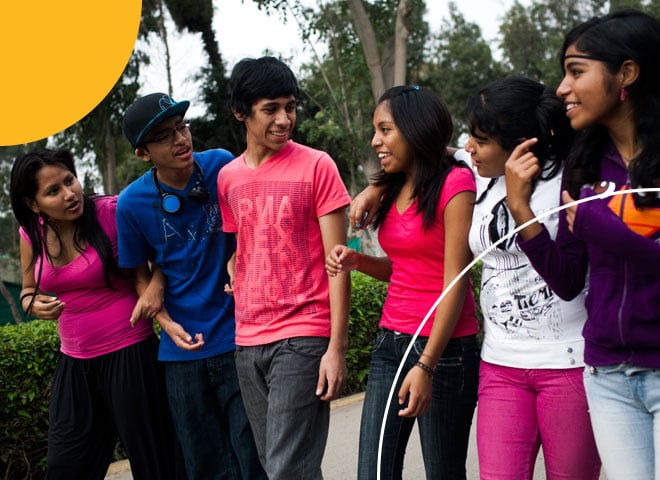
"The material developed in the campaign touches areas that are not only impacting the lives of thousands of adolescents and young people during the emergency, but will have implications on their life trajectory to adulthood: interruption in their education, limited access to sexual and reproductive health, risk of unplanned pregnancies and early unions, unemployment, among others," highlights Carmen Murguía.
Despite the complicated picture, there are still hopes. "I trust the resilience, leadership and creativity of adolescents and young people to propose new rules of the game and new social patterns in what will become the new normal after COVID-19," adds Murguía.
The youth have the floor.
Challenges and expectations
These challenges and others related to mutual care, empathy, continuity of learning, access to sexual and reproductive health services, as well as safe interaction in digital environments are addressed in the campaign through a guidebook, flyers and infographics with key messages and graphic pieces on powerful social networks, platforms with which adolescents and young people are familiar. It is also expected that these tools and content will be disseminated in the "I learn at home" government strategy. Likewise, the contents were generated in Quechua, Ashaninka, Shipibo-Konibo and Aimara
"The material developed in the campaign touches areas that are not only impacting the lives of thousands of adolescents and young people during the emergency, but will have implications on their life trajectory to adulthood: interruption in their education, limited access to sexual and reproductive health, risk of unplanned pregnancies and early unions, unemployment, among others," highlights Carmen Murguía.
Despite the complicated picture, there are still hopes. "I trust the resilience, leadership and creativity of adolescents and young people to propose new rules of the game and new social patterns in what will become the new normal after COVID-19," adds Murguía.
The youth have the floor.
Challenges and expectations
These challenges and others related to mutual care, empathy, continuity of learning, access to sexual and reproductive health services, as well as safe interaction in digital environments are addressed in the campaign through a guidebook, flyers and infographics with key messages and graphic pieces on powerful social networks, platforms with which adolescents and young people are familiar. It is also expected that these tools and content will be disseminated in the "I learn at home" government strategy. Likewise, the contents were generated in Quechua, Ashaninka, Shipibo-Konibo and Aimara
"The material developed in the campaign touches areas that are not only impacting the lives of thousands of adolescents and young people during the emergency, but will have implications on their life trajectory to adulthood: interruption in their education, limited access to sexual and reproductive health, risk of unplanned pregnancies and early unions, unemployment, among others," highlights Carmen Murguía.
Despite the complicated picture, there are still hopes. "I trust the resilience, leadership and creativity of adolescents and young people to propose new rules of the game and new social patterns in what will become the new normal after COVID-19," adds Murguía.
The youth have the floor.




An opportunity to reach all voices
In Peru, populations that communicate in native languages face a difficult reality: in general, their level of access to education, health, and other essential services is lower than the national average. Part of the explanation lies in the fact that the territories where they live are in more dispersed areas and further away from urban centers.
That is why, in the context of the Day of Native Languages (May 27), the United Nations Population Fund in Peru decided to share the contents of several of its communication and awareness campaigns implemented during the national emergency in the Ashaninka, Aimara, Quechua and Shipibo-Konibo languages. This way, the agency's messages reached thousands of people in their native language for the first time.
Why do we commemorate this date?
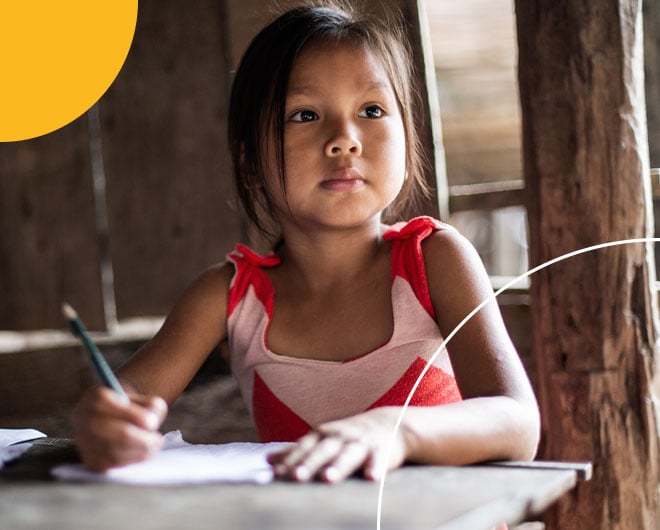

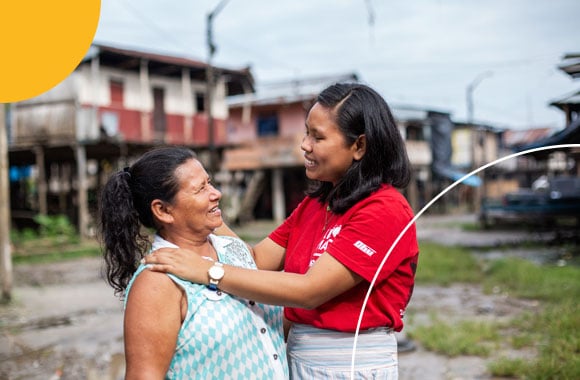
This effort by UNFPA in Peru was later brought to new audiences through social media and with four main translators: Deniz Mishirenti, Jessica Tananta, Rita Choquehuaca and Clodomiro Landeo.. They lent their voices and talent to deliver key messages about democratic coexistence on equal opportunities for men and women in the Ashaninka,Shipibo-Konibo,Aimara and Quechua languages,respectively.
Deployment on radios and social networks
Before being translated, the messages were broadcast through radio stations in Ayacucho, Lambayeque, Lima, Loreto, Piura and Ucayali. These peri-urban and rural areas were affected by the pandemic, seriously limiting their access to health services —particularly sexual and reproductive health—, as well as protection services..
Oraldo Reátegui, director of "Radio La Voz de la Selva", from Loreto, one of the allied spaces, comments on what it is like to work from a location so sensitive to the coronavirus. “The State does not fully reach the most remote populations. The radio makes it possible for them to have better knowledge about the disease and to understand the gravity of the situation we are living in," he highlights.
This effort by UNFPA in Peru was later brought to new audiences through social media and with four main translators: Deniz Mishirenti, Jessica Tananta, Rita Choquehuaca and Clodomiro Landeo.. They lent their voices and talent to deliver key messages about democratic coexistence on equal opportunities for men and women in the Ashaninka,Shipibo-Konibo,Aimara and Quechua languages,respectively.
Deployment on radios and social networks
Before being translated, the messages were broadcast through radio stations in Ayacucho, Lambayeque, Lima, Loreto, Piura and Ucayali. These peri-urban and rural areas were affected by the pandemic, seriously limiting their access to health services —particularly sexual and reproductive health—, as well as protection services..
Oraldo Reátegui, director of "Radio La Voz de la Selva", from Loreto, one of the allied spaces, comments on what it is like to work from a location so sensitive to the coronavirus. “The State does not fully reach the most remote populations. The radio makes it possible for them to have better knowledge about the disease and to understand the gravity of the situation we are living in," he highlights.
This effort by UNFPA in Peru was later brought to new audiences through social media and with four main translators: Deniz Mishirenti, Jessica Tananta, Rita Choquehuaca and Clodomiro Landeo.. They lent their voices and talent to deliver key messages about democratic coexistence on equal opportunities for men and women in the Ashaninka,Shipibo-Konibo,Aimara and Quechua languages,respectively.
This effort by UNFPA in Peru was later brought to new audiences through social media and with four main translators: Deniz Mishirenti, Jessica Tananta, Rita Choquehuaca and Clodomiro Landeo. They lent their voices and talent to deliver key messages about democratic coexistence on equal opportunities for men and women in the Ashaninka, Shipibo-Konibo, Aimara and Quechua , respectively.
The intercultural impact of this campaign in the midst of a national emergency was such that the Ministry of Women and Vulnerable Populations (MIMP) and the National Secretariat for Youth (SENAJU) of the Ministry of Education joined the communication efforts through their digital channels, achieving superlative levels of scope and interaction.
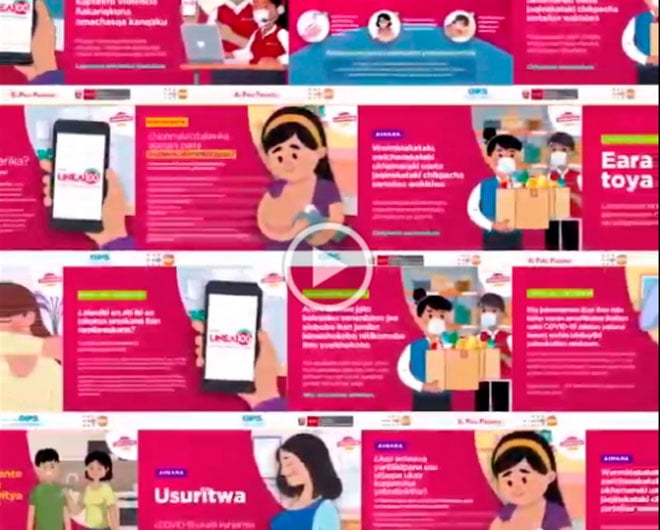
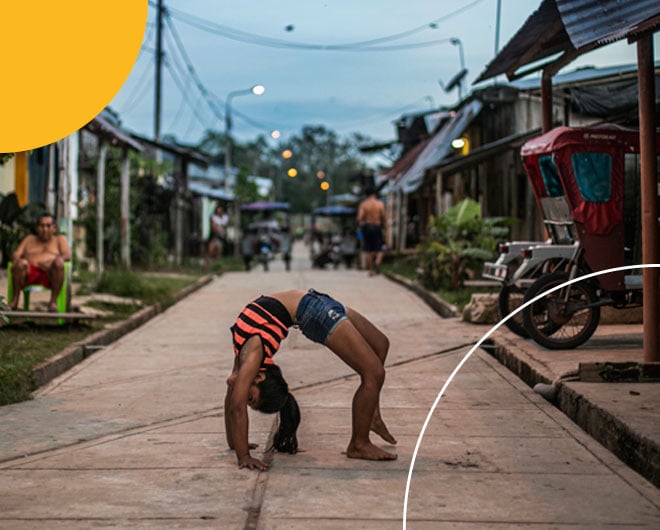
Interculturality and development
For María Pía Molero, general director of the General Directorate for the Mainstreaming of the Gender Approach of the MIMP, this initiative of UNFPA in Peru will leave a mark both in terms of access to more services and in the ability to better understand our peers.
"Native language populations will know where to go in cases of violence or when they require some essential service, acting in equality and without discrimination.In addition, addressing them in their languages not only teaches us more about these populations, it also represents an achievement from a human rights perspective."



Mental health in the midst of uncertainty
Another consequence of COVID-19 in Peru and the implementation of confinement has been the impact on people's mental health. This does not only impact affected people and their families for reasons directly related to the disease, but also the entire population of the country that is exposed to a threatening and uncertain situation.
One of the sectors of the population most affected in the context of the pandemic is women, according to Melissa Bustamante, head of the Gender and Human Rights area of the United Nations Population Fund (UNFPA) in Peru. 'During the pandemic, women's mental health has been affected. The confinement situation, the increase in care tasks and domestic work, and even the presence of situations of gender violence have seriously impacted the rights of women.'
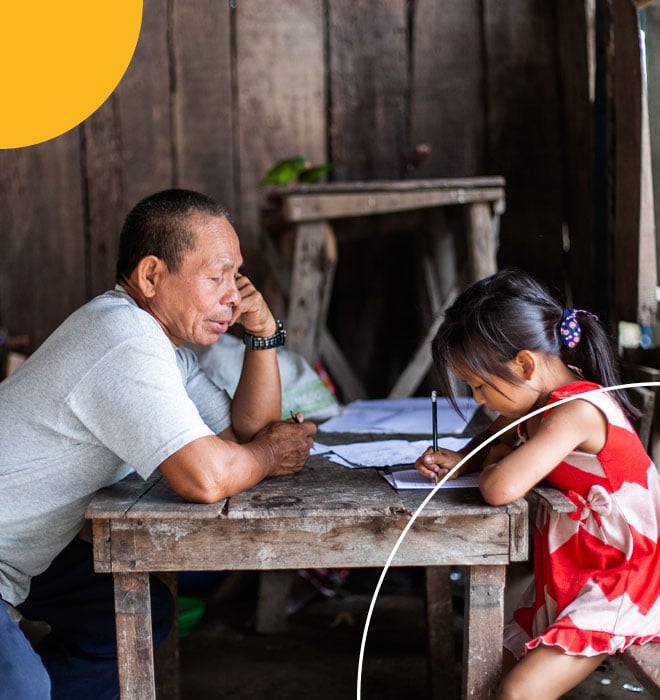
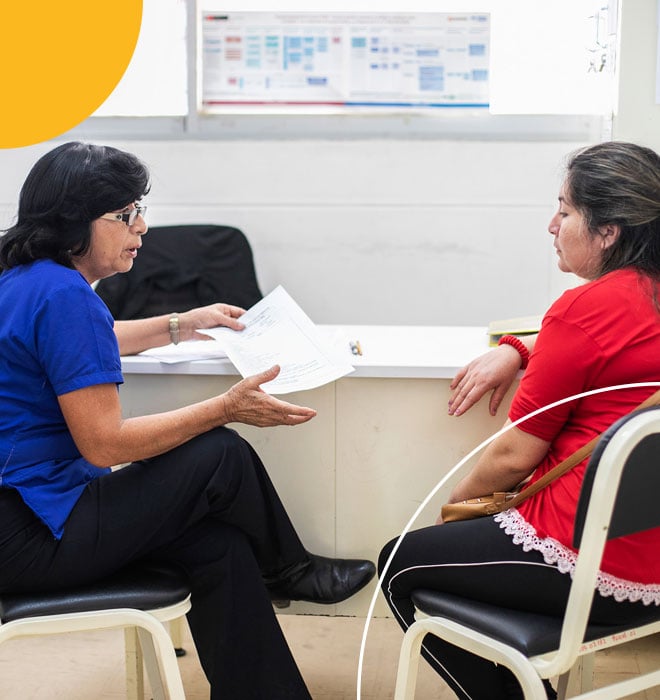
In order to reinforce the role of the health sector in gender-based violence (GBV) and within the framework of Ministerial Resolution No. 186-2020-MINSA, UNFPA in Peru and the Mental Health Directorate of the Ministry of Health (MINSA) developed a toolkit to strengthen the skills of health personnel in the management of cases of women affected by GBV and ensuring the recovery of their mental and reproductive health.
This toolkit contains a technical guide that provides instructions for the reproductive and mental health care of violence survivors. It also includes a friendly booklet, a video and graphic pieces intended to motivate health personnel to learn more about the proper management of cases of violence and, thus, ensure justice, protection and well-being for women who have suffered gender violence.
The technical guide deserves special mention, since it was very well received by organizations and has served as a teaching input. “Several companies asked us about it to train their collaborators. In addition, it was used in courses at the National School of Public Health of the MINSA and the Medical College of Peru, with more than 8 thousand enrolled and about 2 thousand participating physicians," says Dr. Yuri Cutipé, director of the Mental Health Directorate of MINSA.
"The effect on emotional health has been progressive during this time, especially in terms of anxiety, with more than 70% of the population reached. The most affected have been those with the worst socioeconomic conditions, the elderly, women and those who have lost a job or who did not have one," says Cutipé.
Isolation makes it difficult for women to access services that ensure their rights, so health personnel play a decisive role in their care.
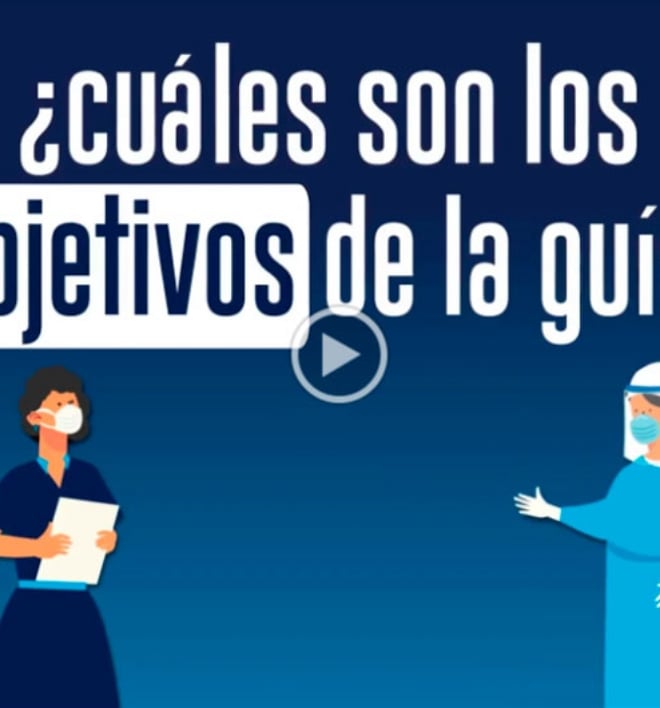




Discrimination is getting worse during the pandemic
When Gianna Camacho said she wanted to study at the university, people close to her did not think she could make it. The situation has been discouraging, even until now. "When people see us, they exclude us", this transgender communicator and activist says about the problems faced by the LGTBIQ+ community in our country. One of these problems is the lack of employment opportunities, which has worsened this last year during the health crisis caused by COVID-19.
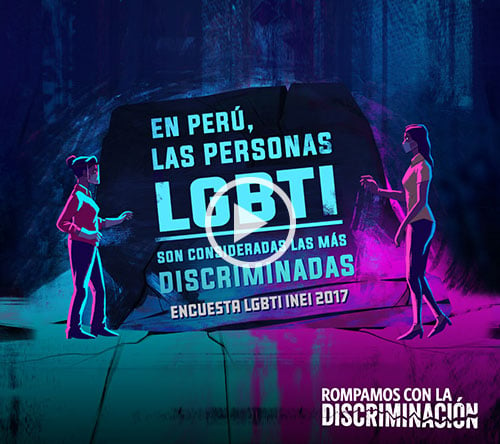
"It was trendy to reinvent oneself during the pandemic. So, a friend of mine started selling ceviche, a dish she cooked really well, in order to survive. But she could not sell any. People told her that they could not buy something cooked by a trans woman," she recalls.
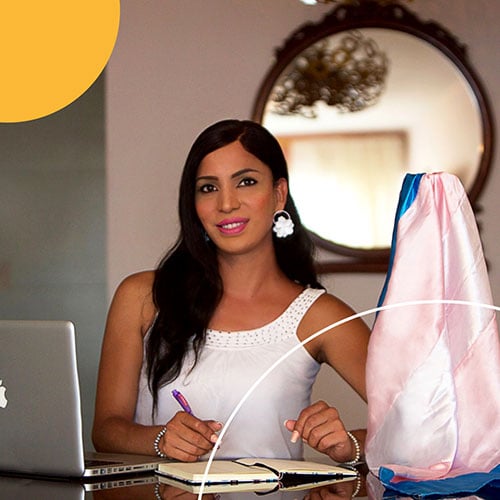
This is the reality for many transgender people. As a matter of fact, discrimination in Peru affects several minority groups. The LGTBIQ + community is one of those (71%), people living with HIV also suffer from it (70%) and indigenous people are another minority group that has been largely discriminated (64%). In many cases, these are normalized actions that infringe upon Human Rights in general, and the right to sexual and reproductive health in particular.
"Their vulnerability increased, exposing many groups who were already in need of special protection to the risk of not surviving the pandemic, due to a lack of access to food, health services, medicines, employment, among other deficiencies," Carmen Murguía—a specialist in Adolescence and Youth at UNFPA—said.
In this context, it was necessary to make this problem visible through a swift joint action in favor of the Human Rights for everyone. For this reason, in December of 2020 a campaign was launched to combat this reality based on an investigation process initiated in 2018. The goal: to encourage talking and reflecting about discrimination evidenced in daily actions of invisible violence against the most vulnerable groups.
Make discrimination visible
"Many of us do not have a choice: we either work on the street or we steal," Gianna reveals. 40% of Peruvians would not employ a trans person.
During the pandemic, the LGTBIQ+ community had to face a major problem. "In view of this emergency situation of not having anything to eat or a place to live, many had to return to their homes from where they were once expelled by their families. They had to return to those violent environments to survive," the activist says.
In order to make visible this and other types of normalized discrimination, four phases were defined, including a diagnosis of the situation, a social media campaign, a reflection hashtag (#PeruFreeOfDiscrimination), and the community campaign in five regions, including two native languages (2021).
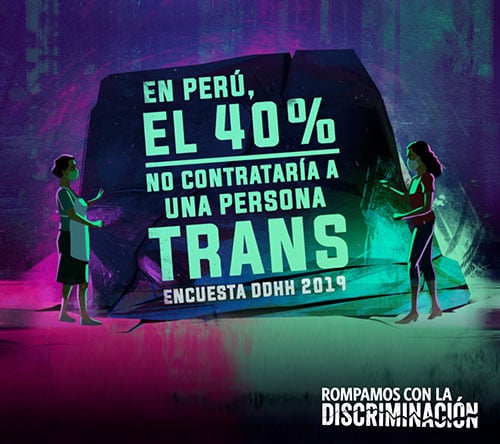

"The objective was to make discrimination visible on the public and political agenda", Murguía explains. For this purpose, the UNFPA in Peru, through technical cooperation and intersectional perspective, worked jointly with the UNAIDS, the Office of the UN Resident Coordinator, and the Ministry of Justice and Human Rights, to get on one hand, national and regional authorities to recognize the discrimination problem and its links with gender inequality , ethnicity/race and sexual orientation, among others, and on the other hand, citizens to reduce discriminatory attitudes and behaviors.
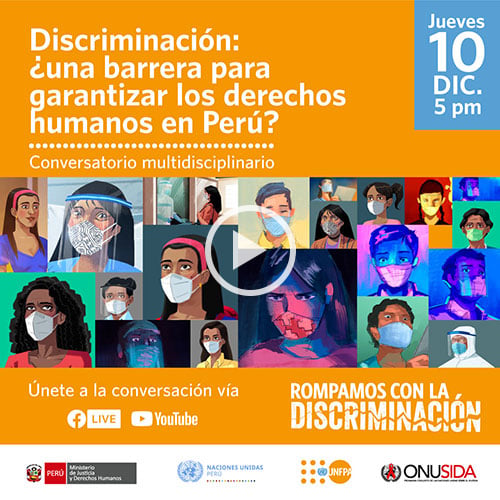
Finally, the campaign included different subject-matter experts, influencers and opinion leaders , who amplified the messages. Additionally, a deep discussion was held with them: "Discrimination: a barrier to guaranteing Human Rights in Peru?"
This articulated work, between international cooperation and the Peruvian State, has made it possible to make the problem of discrimination visible and to contribute to enforcing the fundamental rights of population with special protection condition before and during the pandemic.
Promoting attitude change
With the guidelines of UNFPA, the social communication agency, El Directorio, carried out an in-depth research on some groups in need of special protection, such as trans people and the LGTBIQ+ community in general, HIV-positive people and migrants who are also Afro-descendant or indigenous. Many interviews led to these four animated spots.
After seeing these spots, you can recognize how your own prejudices provoke acts of discrimination and invisible violence. It is about "promoting attitude changes to improve the situation of the most vulnerable people, especially now during the pandemic," Minister of Justice and Human Rights, Eduardo Vega, says.
Finally, the campaign included different subject-matter experts, influencers and opinion leaders , who amplified the messages. Additionally, a deep discussion was held with them: "Discrimination: a barrier to guaranteing Human Rights in Peru?"
This articulated work, between international cooperation and the Peruvian State, has made it possible to make the problem of discrimination visible and to contribute to enforcing the fundamental rights of population with special protection condition before and during the pandemic.
Promoting attitude change
With the guidelines of UNFPA, the social communication agency, El Directorio, carried out an in-depth research on some groups in need of special protection, such as trans people and the LGTBIQ+ community in general, HIV-positive people and migrants who are also Afro-descendant or indigenous. Many interviews led to these four animated spots.
After seeing these spots, you can recognize how your own prejudices provoke acts of discrimination and invisible violence. It is about "promoting attitude changes to improve the situation of the most vulnerable people, especially now during the pandemic," Minister of Justice and Human Rights, Eduardo Vega, says.
Finally, the campaign included different subject-matter experts, influencers and opinion leaders , who amplified the messages. Additionally, a deep discussion was held with them: "Discrimination: a barrier to guaranteing Human Rights in Peru?"
This articulated work, between international cooperation and the Peruvian State, has made it possible to make the problem of discrimination visible and to contribute to enforcing the fundamental rights of population with special protection condition before and during the pandemic.

